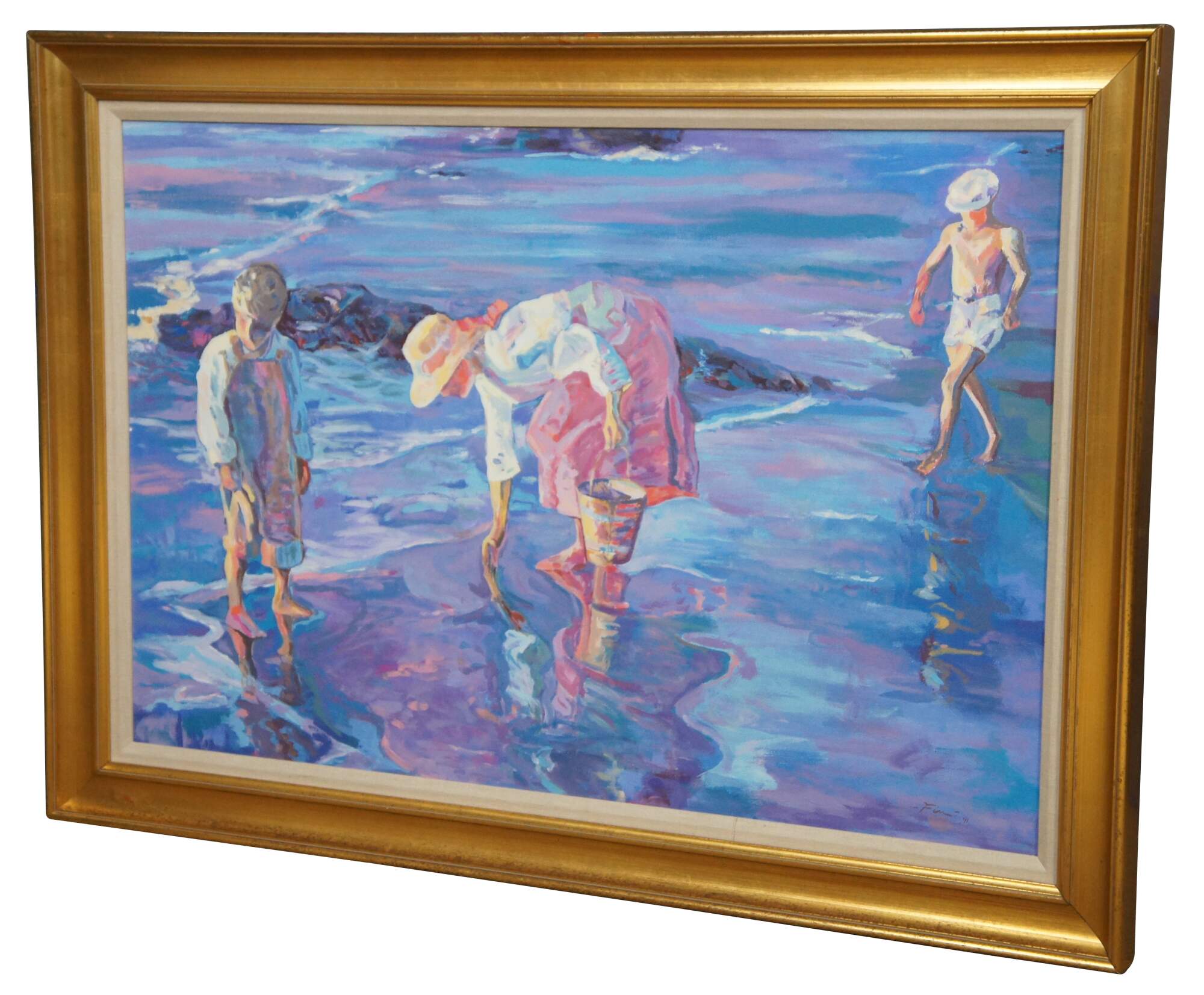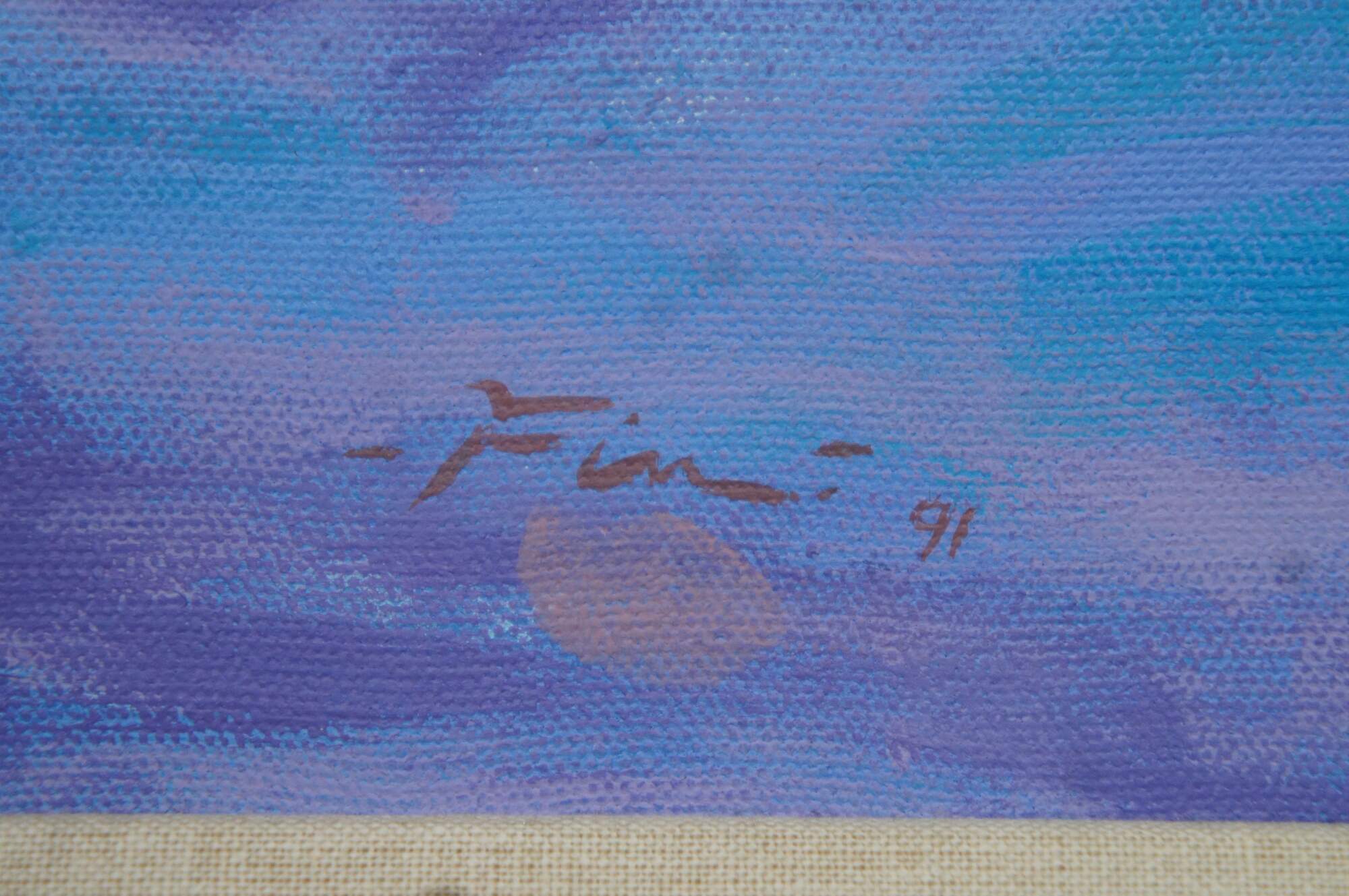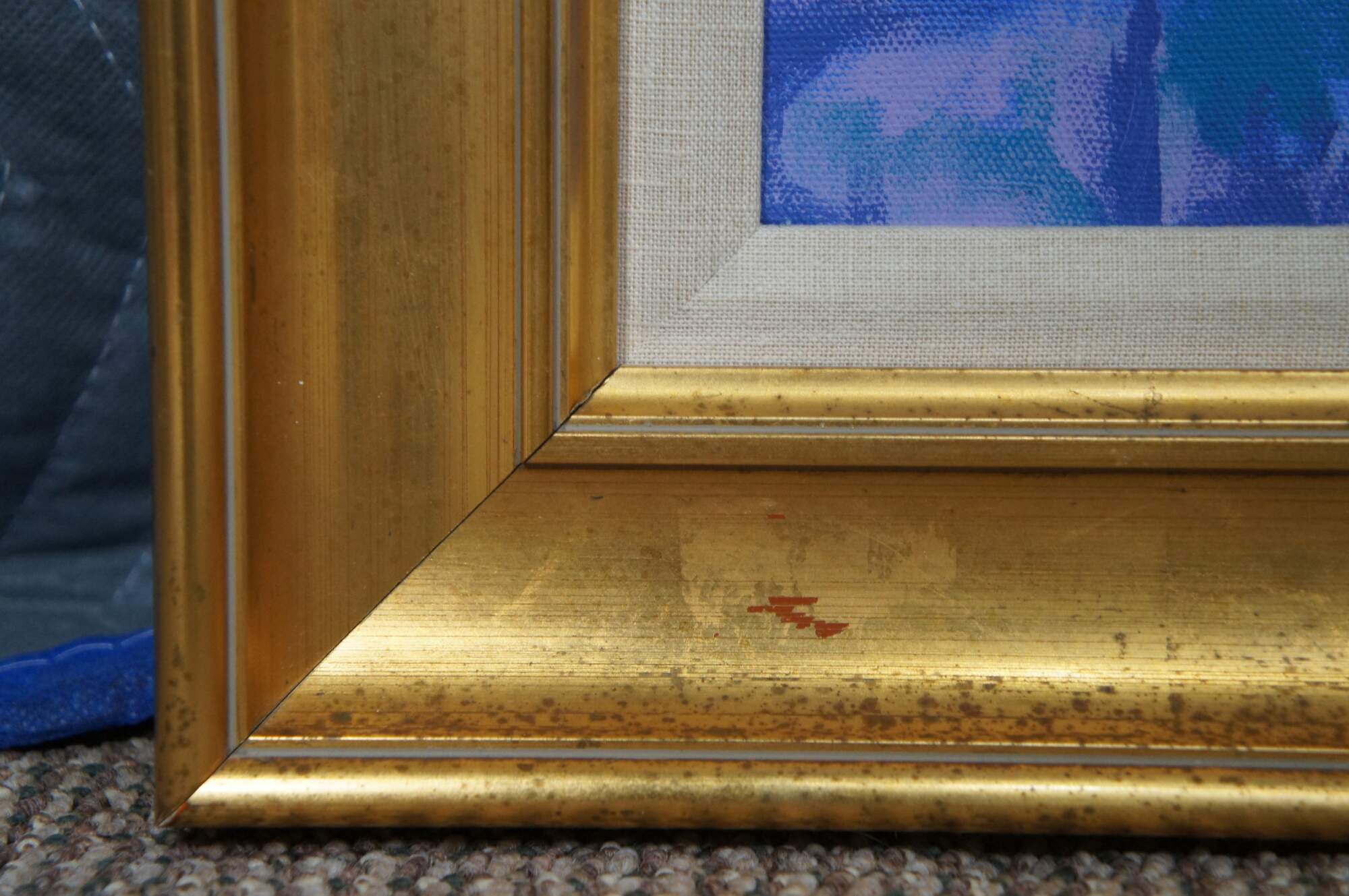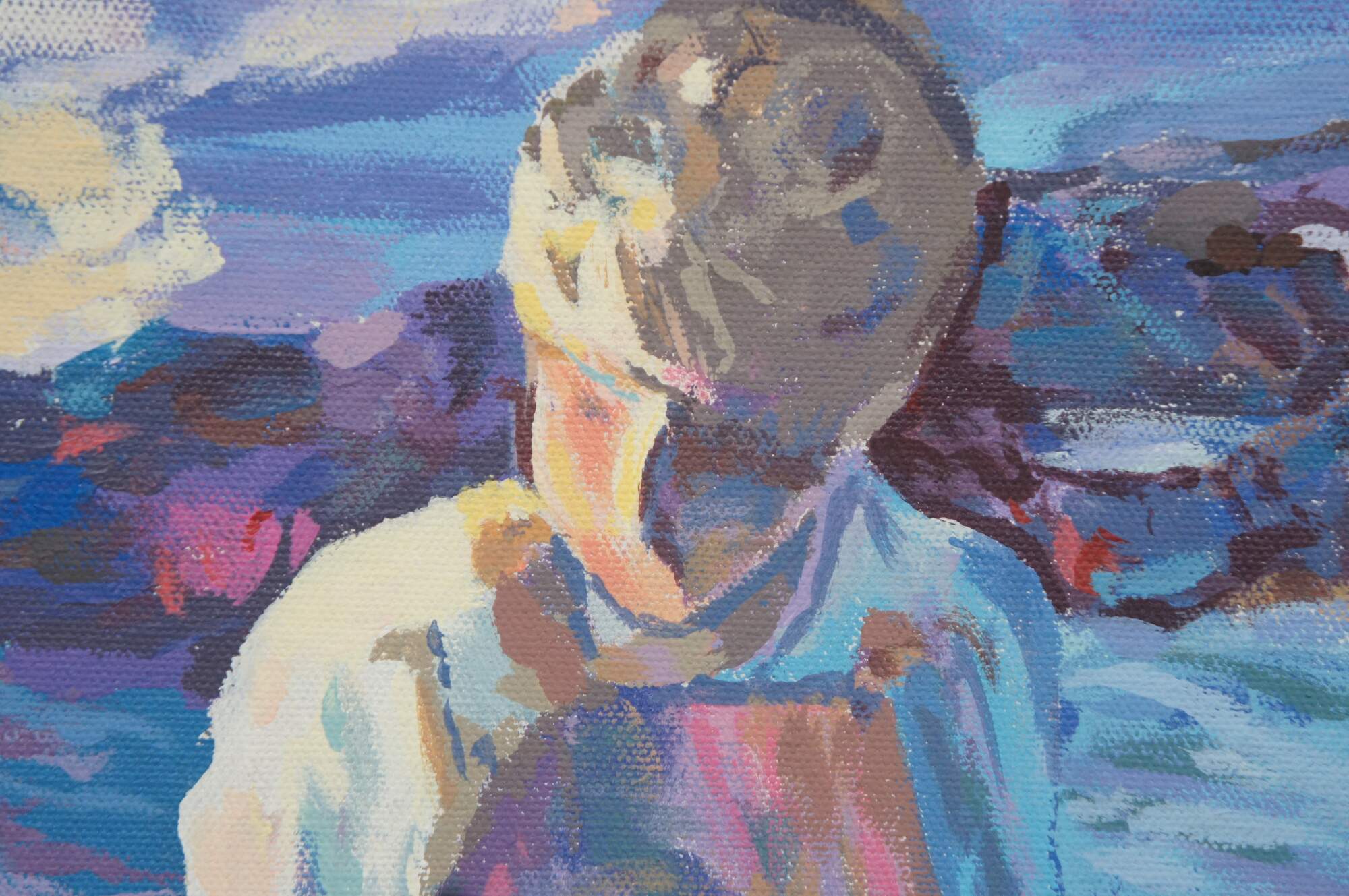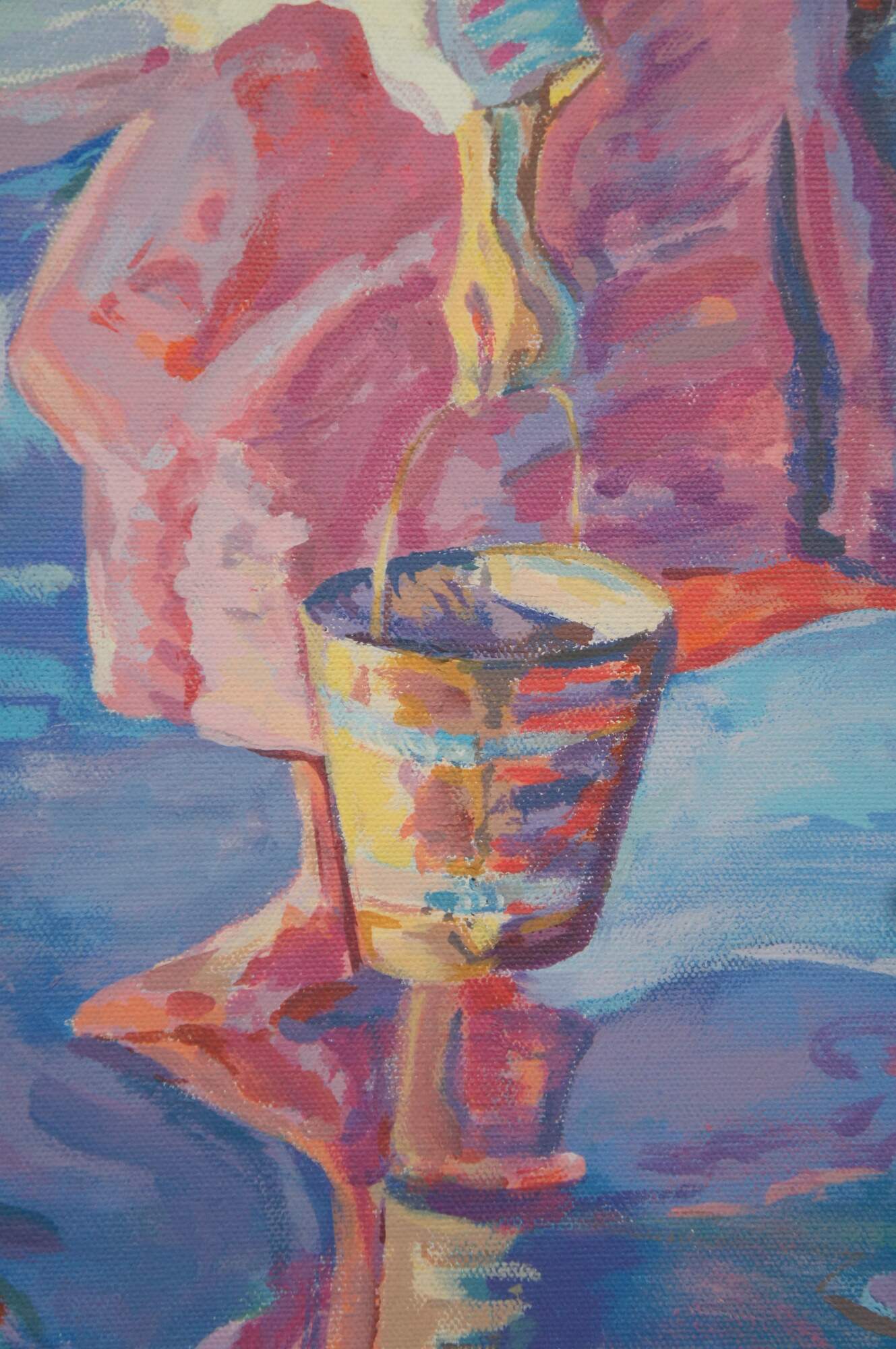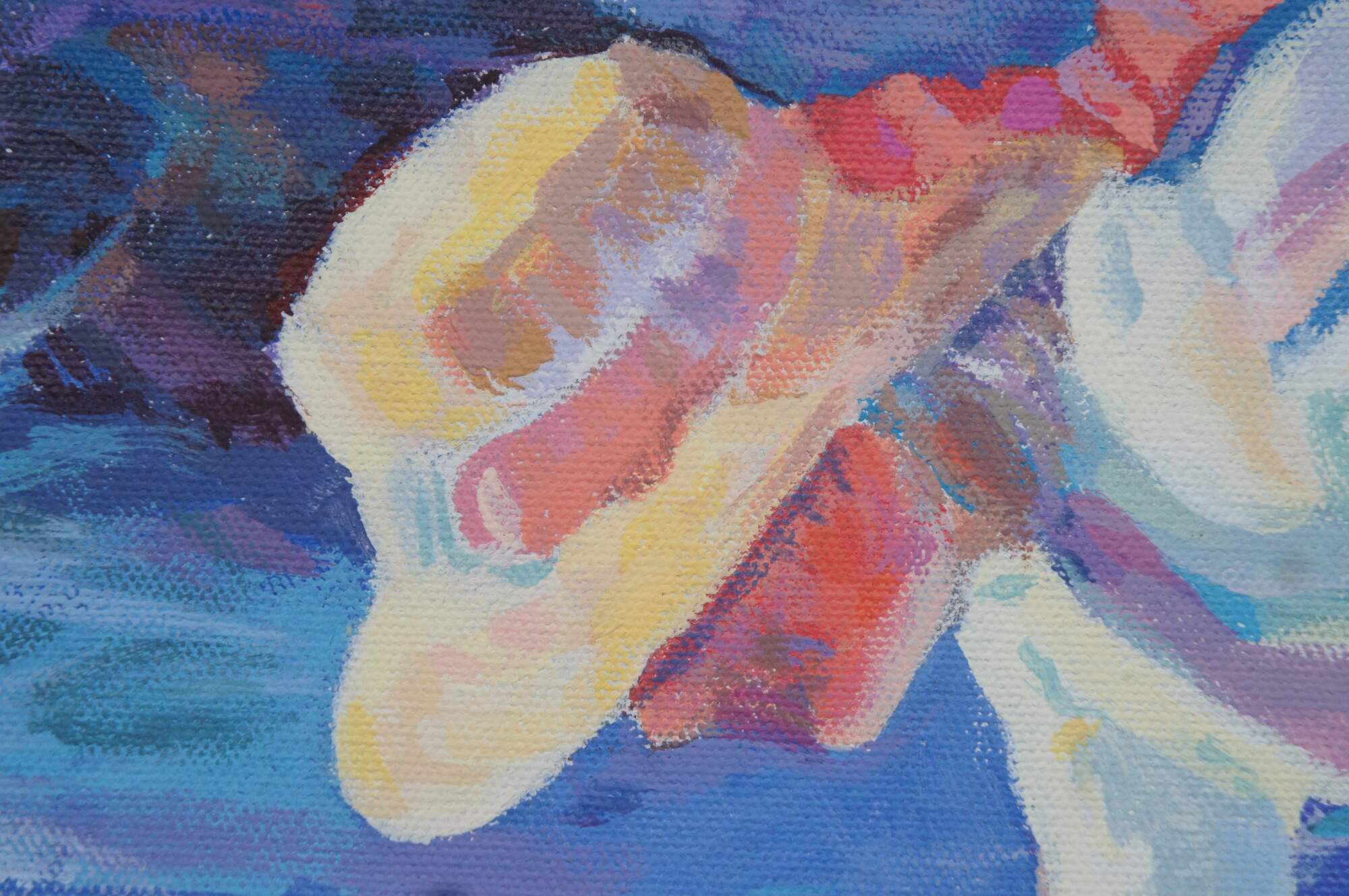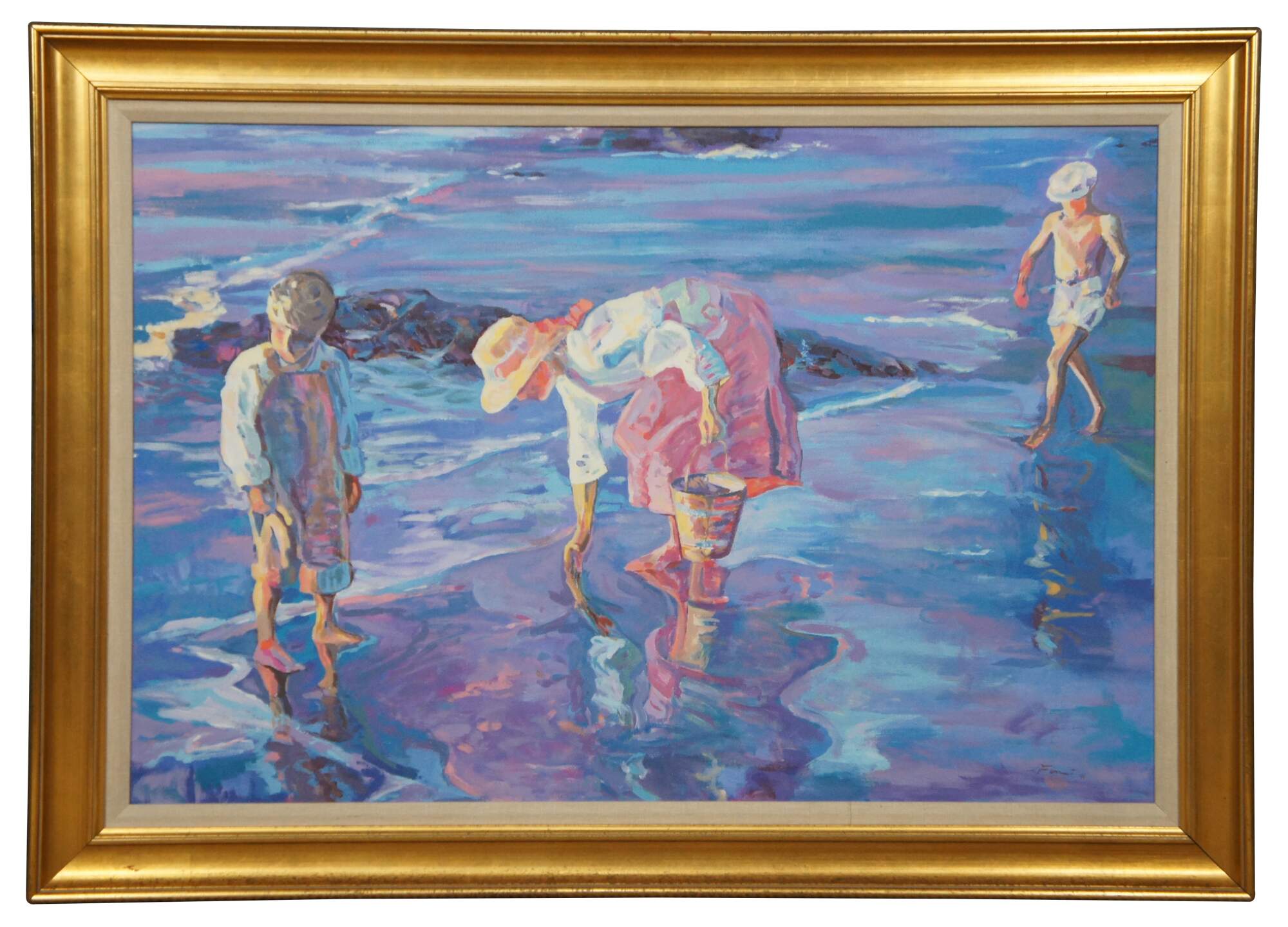
Vintage Shimmering Sand Beach Landscape Oil Painting on Canvas 42"
Sold
Shipping:
Free Shipping Included
Delivery:
Estimated 2-15 Business Days
Payments:
Credit Card, Check, Cash, PayPal, Apple Pay, Venmo
Returns:
30 Days 100% Money Back Guarantee, Buyer Pays Return Shipping
Description
Vintage reproduction oil painting on canvas featuring a beach landscape scene showing three figures collecting shells. Signed lower left, circa 1991. After Donald Eric Hatfields "Shimmering Sand".
Provenance:
Estate of J. Frederic Gagel, owner of multiple Thoroughbred race horses that competed in the Narragansett Special and Kentucky Derby. Their family heritage was strongly intertwined with the military having officers in battles dating back to the American Revolution.
Donald Hatfield was born in 1947, and lives in Napa, California. He first became involved in art while a graduate student in divinity at Fuller Theological Seminary in Pasadena, California, in the late 1960s and early '70s.
Charles Cross, the portrait painter, had a studio nearby, and Hatfield would often go to him for critiques of his work. Eventually, over many games of chess and bottles of wine, a strong friendship developed between the two men. ""He was like a surrogate father,"" Hatfield says of Cross. Hatfield spent considerable time in the studio, watching Cross work, asking questions about art, but when Cross invited him into an art class, he resisted. ""I didn't even know the primary colors,"". Hatfield's sole previous encounter with art happened in the eighth grade: a teacher held up a picture of a dog he'd drawn and announced to the class ""This is NOT what I wanted.""
Finally Don studied with Cross for two years. ""Charlie would always critique my work,"" Hatfield says. ""Then I brought my first color work in-a pastel portrait-and he just started crying"". Hatfield was moved by Cross's reaction, but he was still not able to convince himself of his calling, and he left his mentor.
""Art just disappeared from my life"", he recalls, ""but I continually went to museums and looked at art books. Occasionally, I would do a pastel portrait, but it never occurred to me that painting would one day take center stage."" Driven by the urgency to provide for his family, which by this time consisted of four children, he proceeded to spend the next seven~eight years doing anything he could just to get by.
During these years, Hatfield worked as an evangelical minister, a carpenter, and in retail management. While attending a business conference in Chicago, he went to visit The Art Institute of Chicago and saw a painting by Giambattista Tiepolo (1696-1770) that so impressed him, it changed his life. ""Charlie told me that I had to look at the legacy of oil painting to develop my own taste. John Singer Sargent loved Tiepolo,"" Hatfield, who admires Sargent, says. ""He saw Tiepolo could edit the form and simplify it. So I'm in there looking at Tiepolo for the same reason Sargent does!"". It was a time of intense personal crisis for Hatfield, the kind of time when one's senses are particularly open to the messages of the universe. Hatfield decided he was going to become a full time artist.
Within two weeks (& in 1979), Hatfield, his wife, and four children, who were then living in the Midwest, packed up their belongings and moved to Santa Fe on the advice of the premier portrait painter Ray Kinstler. During their first year there, Hatfield realized he needed more training, so he and his family returned to his native California, where he took workshops with Dan McCaw and studied with Sergei Bongart for several years and where he decided to settle. ""Sergei was a wonderful presence, a great teacher.""
Don diligently worked and perfected his style that we recognize today. His unique impressionistic style has brought him great acclaim in the art world and around the world. Don's paintings hang in many important private and corporate collections throughout the world.
Alternate Bio:
Don Hatfield is a painter in impressionist style that softly blends figures of realism with the gentle touch of classic impressionism. Hatfield strives to create paintings that bond themselves to the viewer.
In the vein of romantic impressionism. He shows the viewer that beauty can arise from one stirring moment such as a family reunion, a young boy searching for shells on the beach, or the warmth of the sun touching a mother and her child.
Hatfield says he is preoccupied with the effects of light on form. The beach, with all the purity of its light on sand, water and figures, is a frequent setting for his stories; and his paintings are stories. ""On the beach,"" Hatfield says, ""the viewer is given enough space to have his own reaction.""
His work is traditional in both concept and technique, and intended to portraying strong, quiet emotions through subtle, rich textures and warm inviting hues.
Hatfield did not always dream of being an artist. He studied philosophy, theology, and literature and it was not until he met the portraitist, Charles Cross, that he really began to explore his talents as a painter. Cross was impressed with Hatfield's ""innate color sense"" that was displayed in the soft pastel colors of his oil paintings. Cross encouraged Don to pursue his talents by becoming his protégé. Two years of study with Cross was not enough to convince Hatfield to focus all of his energy on the world of art; he abandoned his short career in art to pursue a career in ministry. However, his desire to become an artist was too strong to ignore.
In 1979, on the advice of the portrait painter Ray Kinstler, Hatfield moved to Santa Fe, New Mexico to pursue painting once again. He eventually moved back to Los Angeles to fulfill his creative potential under the tutelage of Sergei Bongart, who had a tremendous influence on him. ""He was a wonderful presence,"" Hatfield says' ""a great teacher."" It was during this time with Bongart that he perfected his style that we recognize today.
In his development as an artist, Hatfield had the added influence of modern cinematic interpretation. Affected by the new mastery of color on film, in advertising and television, he felt a need for a more intoxicating light, another dimension to the beach attraction. Seeking a truth in the paint itself, he documented that fleeting essence of the tender, the humorous, the enchantment of a special moment in time.
Condition
Very Good
Dimensions
42” x 1.75” x 30” / Sans Frame – 35.5” x 23.5” (Width x Depth x Height)
